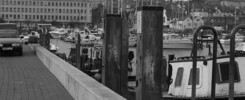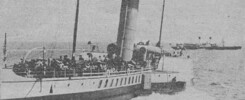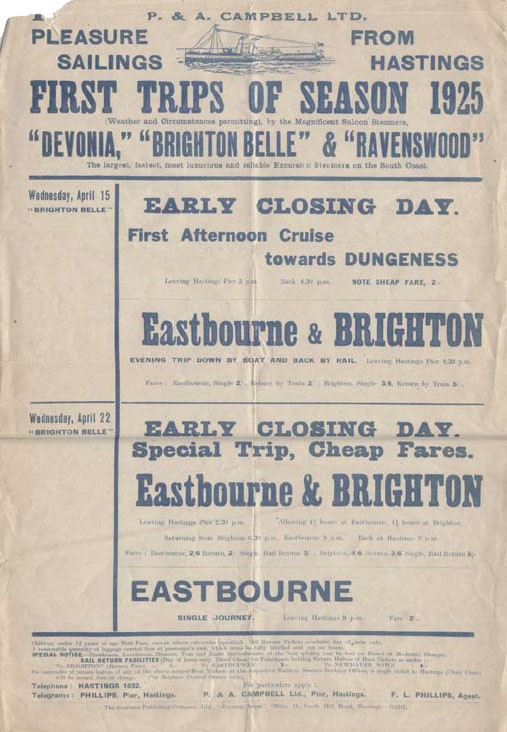
The start of the season on the Sussex Coast eighty years ago in April 1925 with the paddle steamer Brighton Belle taking advantage of Wednesday early closing day in Hastings to offer coastal cruises to Dungeness, Eastbourne and Brighton.
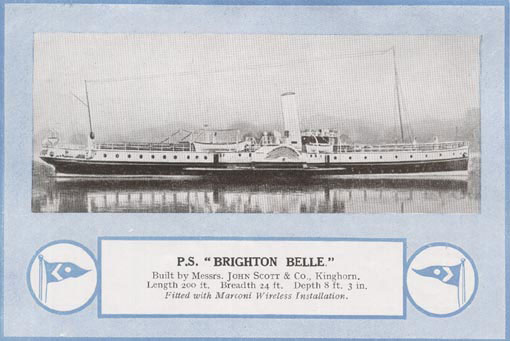
Brighton Belle was built in 1900 as the Lady Evelyn for the Furness Railway Company’s service between Barrow and Fleetwood. After the First World War she was bought by Tuckers for their Yellow Funnel service on the Bristol Channel but this lasted lasted only until 1923 when the company went into liquidation. Campbells then snapped her up at a bargain price, renamed her Brighton Belle, registered her in Newhaven and put her into service on their Sussex Coast routes.
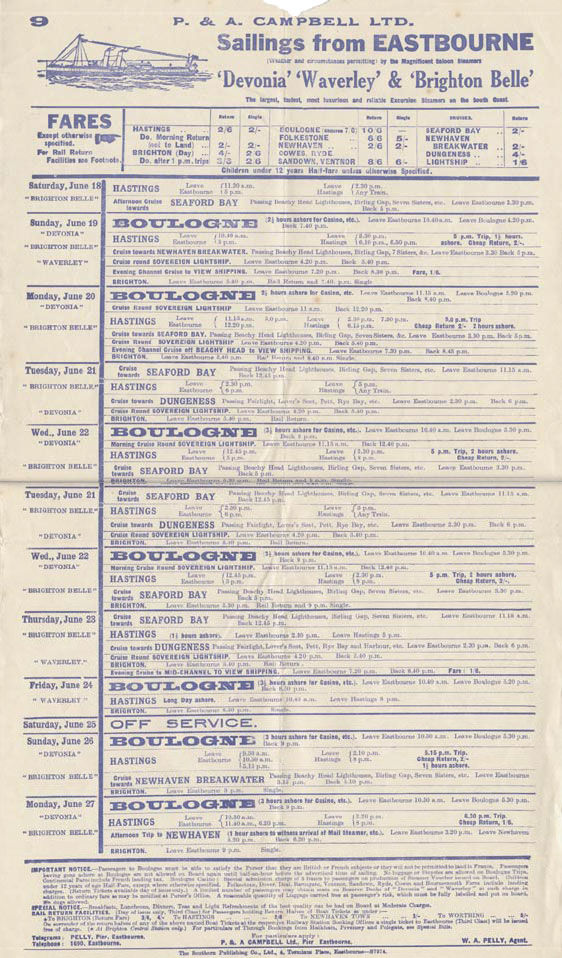
Brighton Belle was quite a small and slow steamer by P & A Campbell standards and, as a result, generally left the longer sailings to bigger and faster paddlers spending most of her time pottering about between the piers at Brighton, Eastbourne and Hastings and offering other short cruises such as towards Seaford Bay, round the Royal Sovereign Lightship, towards Dungeness or towards the Newhaven Breakwater. This omnipresence on shorter cruises had one unexpected result which has secured her a place in the memory of very many people not otherwise even remotely interested in the history of excursion paddle steamers. In Graham Greene’s novel “Brighton Rock”, a tale of Catholicism and gangsters in 1930s Brighton, the amateur detective Ida receives an invitation from her friend Mr Corkery “It’s a fine day, Ida. Let’s go on the Brighton Belle and talk it over there. No closing hours at sea.”
According to P & A Campbells’s guide book for the period, Brighton Belle did have a Class II Passenger Certificate for cross Channel work with a passenger capacity reduced from 779 to just 320 and she was fitted with the necessary radio telephone but she seems not to have used this very much. Chris Collard recounts in his excellent book “Special Excursions” The Story of Campbell’s steamers 1919 – 1939″, that she made only one such trip to Boulogne arriving and departing the port on Sunday 28th August 1932.
1936 was Brighton Belle’s last season on the Sussex Coast during which she had the distinction of being struck by lightning. A newspaper report stated:
At 8.43am on July 10, in a violent thunderstorm, Brighton Belle was bringing 50 people from Hastings to join the Brighton Queen for Boulogne, and when she was 300yds from Eastbourne Pier there was a blinding flash, accompanied by deafening thunder, splintering the top of the top of the foremast with the aerial spreader sent whipping down to the deck narrowly missing the captain on the bridge. The radio was burned out and the purser, Mr Cuttle, received severe shock.
From 1937 to 1939 she was transferred to operate on the Bristol Channel.
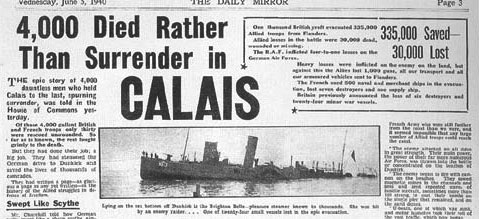
Brighton Belle was one of many steamers called up to assist in the evacuation of Dunkirk in May 1940 but, sadly, she had the misfortune to strike a wreck off the French Coast on the 28th May. Shortly afterwards she sank as reported above in the Daily Mirror of 5th June 1940 and disappeared beneath the waves like some of the ill-starred gangsters in Graham Green’s Brighton Rock. She lives on though in the minds of readers for generations to come with her minor but nonetheless important place in English literature.
Kingswear Castle returned to service in 2023 after the first part of a major rebuild which is designed to set her up for the next 25 years running on the River Dart. The Paddle Steamer Kingswear Castle Trust is now fund raising for the second phase of the rebuild. You can read more about the rebuilds and how you can help if you can here.
John Megoran

